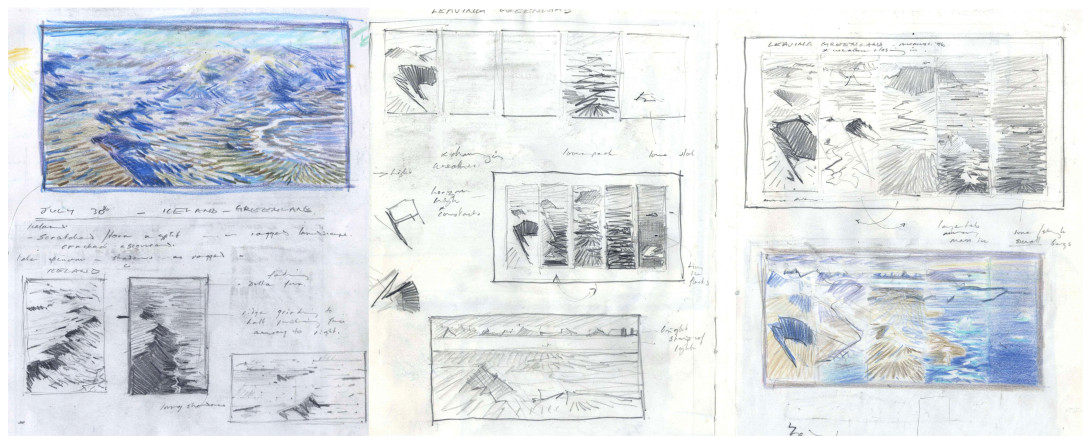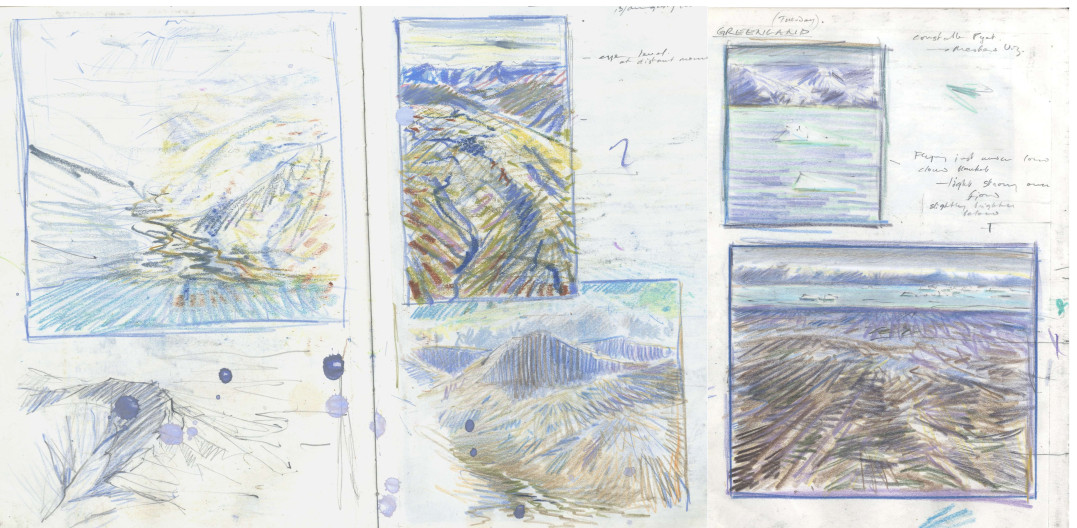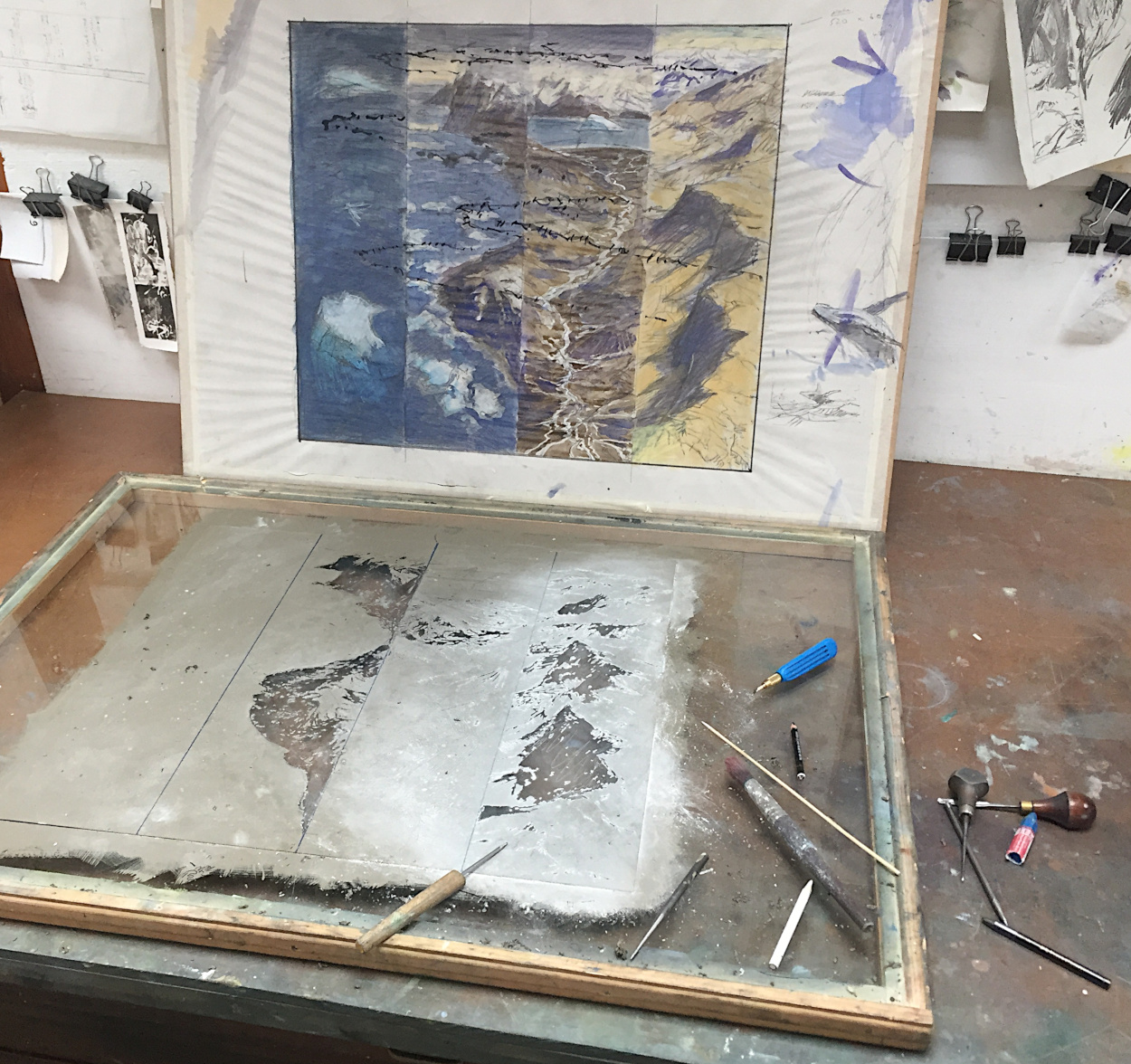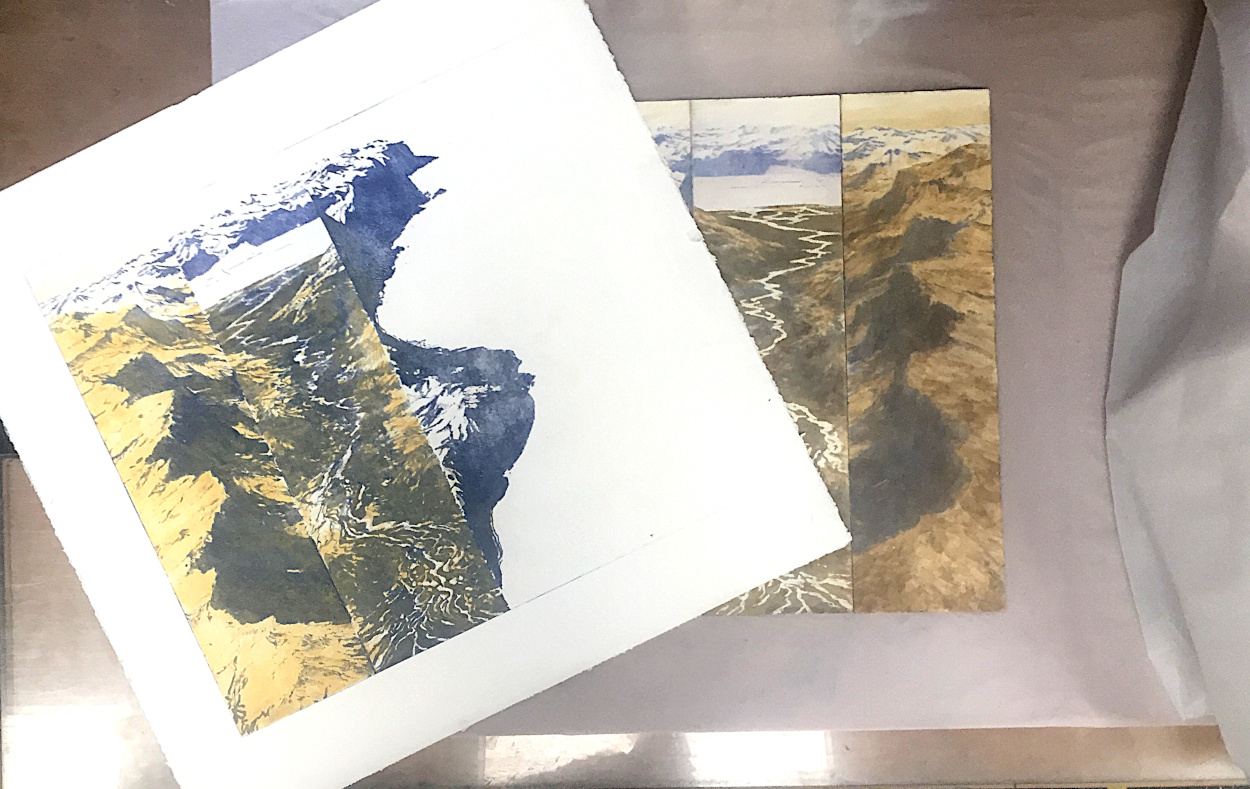Developing an intaglio & collagraph printSpring 2020 |
For a long while I'd had an idea that I'd never seriously pursued but at the turn of the year began thinking about it again. I felt working with monoprint / collagraph / intaglio printmaking methods might help bring the idea to life. It was based on a prolonged field trip to NE Greenland over thirty years ago when I was working on a book project about bird migration (An Artist on Migration). For the story I needeed to experience the high Arctic landscape and paint and write about the lives of migrant birds that arrive in their multitudes to breed each summer. They take advantage of the abundance of food and long daylight hours to raise a brood before returning south making for Europe and Africa to spend the winter months.
|
|

 (Above) Some of the sketchbook pages from the flight along the coast using a mix of graphite, coloured pencils and hard oil pastels to fix impressions of the changing landscape below.
(Above) Some of the sketchbook pages from the flight along the coast using a mix of graphite, coloured pencils and hard oil pastels to fix impressions of the changing landscape below.
The return journey from Mestersvig in NE Greenland involved flying first to Nerlerit Inaatin then on to Akueryi in northern Iceland. It was in a small aircraft that flew fairly low over the awe inspiring landscape dropping precipitously onto a landing strip cleared on the tundra to pick up another party of summer field-workers. Although cramped and strapped in among piles of boxes and camping kit I managed to open a sketchbook and make drawings throughout the flight. At first it was the extraordinary colours and unique perspective on the landscape from such a height, then after Nerlerit Inaatin it was down the coast gradually gaining height until we passed out over the cold blue-grey of the Denmark Strait beneath all the way across to Akureyri. It struck me then that for much of the flight we were likely to have been at about the same altitude as a flock of migrating geese - after all, for the past few weeks I'd been seeing lots of pink-footed and barnacle geese which would soon be leaving on their long migration flight heading for wintering grounds in western Europe. I was especially intrigued by the changes in the warm bright colours in the landscape gradually giving way to cooler tones of the sea puntcuated by the brightness of icebergs - like a series of consecuative frames extracted from a film sequence. So I began doodling ideas in the sketchbook that might capture some of those thoughts and visual impact of such a fantatstic experience. There they have remained until just a month or so ago! |
(Above right) Early stages of developing the print. The dark blue-black tones are printed from the polycarbonate block. The lighter ochre is printed on top from card blocks which have been worked using mixes of lacquer and carborundum pastes to create surface textures that will hold ink. There are possibly two or three more plates to add but prints tend to take on a life of their own and as each block is added the artist's response to how the next might work has the potential to send the image in a direction very different to the one anticipated - which is what makes printmaking such an interesting and exciting way to work.
© Bruce Pearson 2025. All rights reserved


